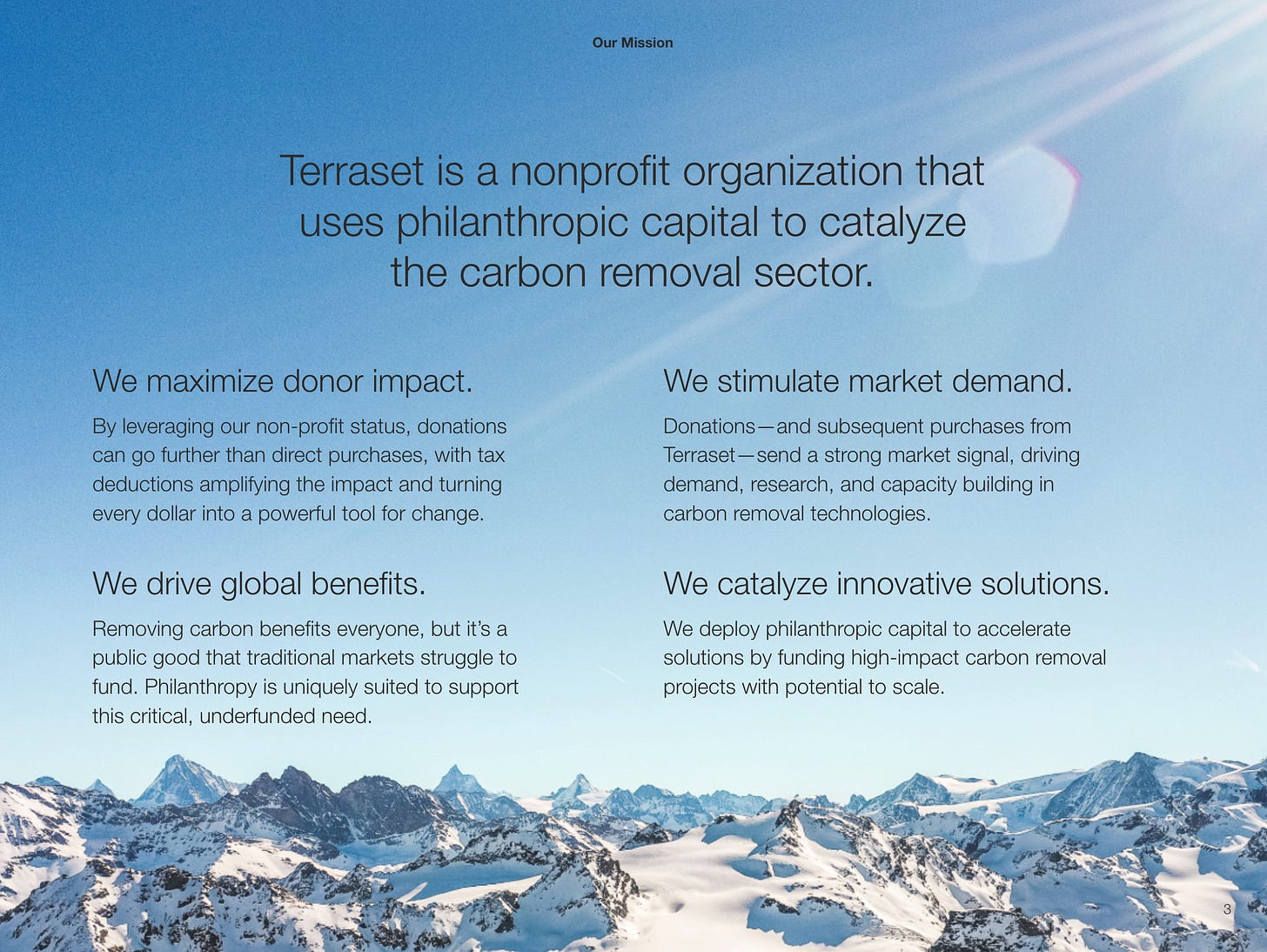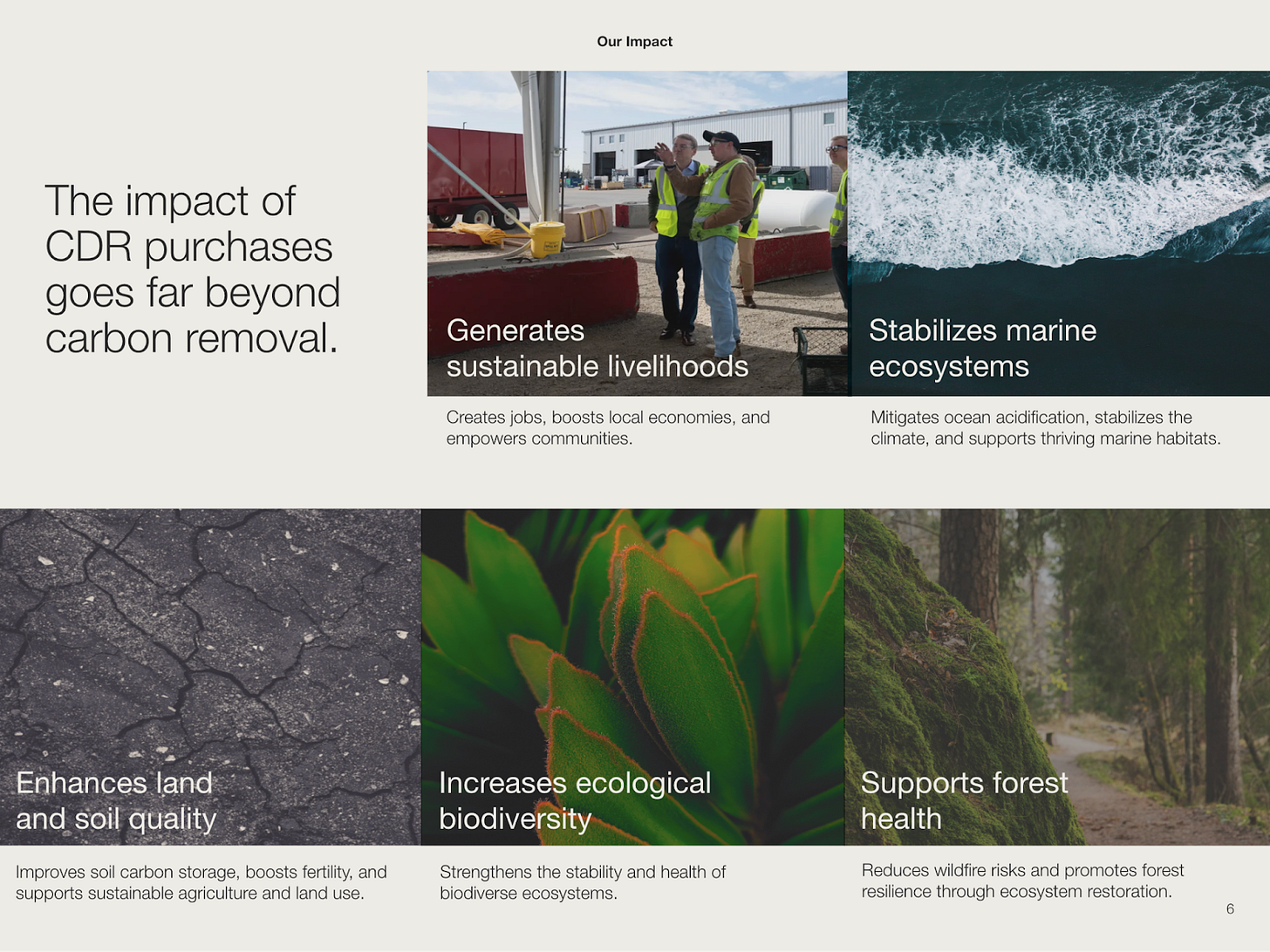We just sent our annual report to our donors—a deep dive into how we’re mobilizing philanthropic capital to accelerate carbon removal.
Then we realized this isn’t just a donor update. It’s a story we want to share with everyone. So we decided to pull out a few slides and highlights from the full 17-page report and voice over some of the context we’d share if we were walking through it with you.
Mission: unchanged, but more meaning
Our mission hasn’t changed since we launched two years ago—to use philanthropic capital to catalyze the carbon removal sector. But we’ve gotten a lot clearer on why people are backing it. Many donors are excited about catalytic market impact, while others are focused on complementary environmental and social benefits, like healthier soils or stronger local economies. And of course, they share a belief in the urgent need to permanently remove CO2 from the atmosphere.
Impact: removing carbon and making it mainstream
We’ve deployed millions of dollars into high-quality, permanent carbon removal—our most important metric. We debated leading with the number of tons, and decided against it. Why? Because tons don’t tell the full story. They don’t show how many new buyers entered the space—or how that builds market momentum (but for details on our purchases you can always check out the database at CDR.fyi).
We’re especially proud that 186 of our 226 donors were first-time CDR buyers. That’s the work: making carbon removal more mainstream. And that only happens if we grow the number of buyers exponentially.
Know someone who should be a first-time CDR buyer in 2025? Send them our way.
Learnings: carbon is just the start
The benefits of carbon removal go far beyond removing carbon. These projects create jobs, boost biodiversity, and strengthen ecosystems—making them climate solutions with real-world impact. We’ve seen the importance of non-removal impact grow exponentially, especially among donors. You might’ve heard the term “co-benefits” to describe them, but we stopped using the term because it makes them sound secondary. In many cases, these outcomes are just as important as the removal itself—both for their real-world value, and for their ability to unlock funding from donors focused on intersectional impact.
Know a CDR project with meaningful impact beyond carbon removal? Tell us about it.
Scaling CDR takes both technical and financial innovation. That’s why we launched two councils—each solving a different piece of the puzzle. The Carbon Council helps us vet and select the most promising projects, while the Growth Council connects us with donors to fund them.
Partnerships move the needle. At Carbon Unbound: West Coast, we teamed up with Unbound, AirMiners, and CDR.fyi to launch the first-ever live carbon removal marketplace—pooling donations on-site to fund real projects from our portfolio. It empowered dozens of attendees to become first-time buyers and spotlighted the impact of philanthropy in scaling early-stage solutions.
2025: part fundamentals, part experimentation
We’re doubling down on what works and continuing to try new things. That means experimenting with new ways to deploy philanthropic capital, faster—like recoverable grants, pre-purchases that de-risk early demand, and revolving funds that recycle capital and bring new buyers.
We're also adding new CDR methodologies to our portfolio, and piloting CDR-adjacent work in refrigerant destruction and methane abatement.
Want to fund a creative financing approach? Send us a note.
That’s the quick version. The full thing is worth a look!











